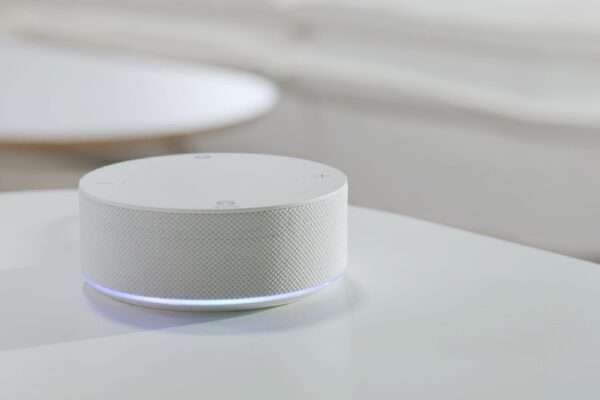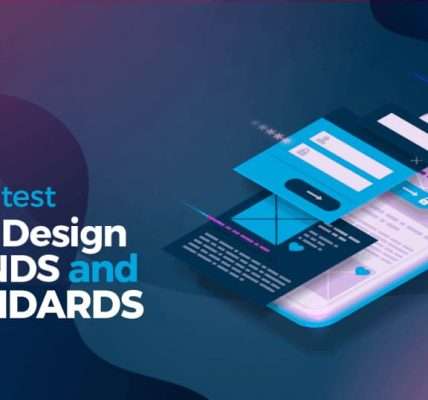LG is boldly stepping into the future, unifying its artificial intelligence (AI) efforts under a single banner: LG ThinQ․ This strategic move signals a commitment to creating a truly interconnected ecosystem where appliances and devices communicate and collaborate seamlessly․ Instead of fragmented AI experiences, consumers can expect a cohesive and intuitive interaction with their LG products․ This unified platform promises to enhance convenience, personalize experiences, and simplify daily life, all powered by the intelligence embedded within each LG ThinQ device;
What is LG ThinQ?
LG ThinQ represents more than just a rebranding; it’s a foundational platform designed to integrate AI across LG’s diverse product lines․ From smart refrigerators that suggest recipes based on available ingredients to TVs that learn your viewing preferences, ThinQ aims to anticipate your needs and proactively offer solutions․ It’s about creating a world where technology fades into the background, working intuitively to improve your quality of life․
The Core Principles of LG ThinQ
- Connectivity: Ensuring seamless communication between all ThinQ-enabled devices․
- Personalization: Learning user habits and preferences to tailor experiences․
- Proactivity: Anticipating needs and offering relevant solutions before being asked․
- Simplification: Making technology intuitive and easy to use for everyone․
The Benefits of an Integrated AI Ecosystem
The real power of LG ThinQ lies in its ability to connect disparate devices and create a synergistic effect․ Imagine your smart washing machine detecting a stain and automatically suggesting the optimal wash cycle through your ThinQ app․ Or your refrigerator alerting you when you’re running low on milk and seamlessly adding it to your online shopping list․ This level of integration allows for a truly intelligent and responsive home environment․
Beyond the Home: LG ThinQ’s Future
While currently focused on home appliances and entertainment systems, LG’s vision for ThinQ extends far beyond the living room․ The company is actively exploring applications in areas such as automotive, robotics, and even healthcare․ The potential for AI to transform these industries is immense, and LG is positioning itself to be a leader in this technological revolution․
Ultimately, the success of LG ThinQ hinges on its ability to deliver tangible benefits to consumers․ If it can truly simplify daily life and enhance user experiences, it has the potential to become a ubiquitous and indispensable part of the modern world․ The brand promises a future where technology anticipates our needs and works seamlessly to improve our lives․
Developing with LG ThinQ: Opportunities for Innovation
Now, let’s talk about the exciting possibilities that LG ThinQ opens up for developers and innovators․ LG is actively fostering an ecosystem where third-party developers can contribute to the platform’s capabilities․ This means building applications, services, and even hardware that seamlessly integrate with the ThinQ environment․ Think of it as a sandbox for creativity, where you can leverage LG’s established infrastructure to bring your AI-powered ideas to life․
Key Areas for Developer Focus
- Voice Control Integration: Enhance existing apps or create new ones that respond to voice commands through ThinQ; Consider applications for accessibility, home automation, or even entertainment․
- Data Analytics and Insights: Leverage the data generated by ThinQ devices to provide personalized recommendations, predictive maintenance, or even energy efficiency solutions․
- Custom Smart Home Scenarios: Design and implement custom “scenes” that trigger specific actions across multiple ThinQ devices based on user preferences or environmental conditions․ Imagine a “Movie Night” scene that dims the lights, adjusts the thermostat, and starts the TV with a single command․
- IoT Device Integration: Connect non-LG IoT devices to the ThinQ ecosystem, creating a truly unified smart home experience․ This requires careful attention to security and data privacy․
Tips for Success in the LG ThinQ Ecosystem
Breaking into a new ecosystem can feel daunting, but with the right approach, you can maximize your chances of success․ Here are a few guiding principles:
- Prioritize User Experience: Always keep the end-user in mind․ Design intuitive interfaces, provide clear instructions, and focus on solving real-world problems․ A confusing or clunky application will quickly be abandoned․
- Security First: Data privacy and security are paramount․ Implement robust security measures to protect user data and prevent unauthorized access to ThinQ devices․
- Leverage LG’s Resources: LG provides extensive documentation, SDKs, and support resources for developers․ Take advantage of these tools to streamline your development process and ensure compatibility with the ThinQ platform․
- Think Outside the Box: Don’t be afraid to experiment with unconventional ideas․ The most successful ThinQ applications will be those that offer unique and innovative solutions․
The Ethical Considerations of AI in the Home
As we integrate more AI into our homes, it’s crucial to consider the ethical implications․ Issues such as data privacy, algorithmic bias, and the potential for job displacement need careful consideration․ As developers, we have a responsibility to ensure that AI is used ethically and responsibly․
The future powered by LG ThinQ promises a smart and connected world, but it’s up to us to ensure that this future is also equitable and beneficial for all․ The journey with smart technology continues, and ethical considerations should always be at the forefront of development․
Here are the instructions:
‘ARTICLE DESIGN:
1․ No citations․
ARTICLE STRUCTURE:
1․ No H1 heading․
2․ 100% unique, which no one has ever written anywhere․
3․ Use h2 and h3 subheadings, as well as bulleted lists, at least 2 times․
4․ The first paragraph of the article should consist of at least 4 sentences․
5․ Monitor the variety of sentence lengths to improve readability and in accordance with all spelling and orthography rules․
6․ The keyword should be used exactly 4 times in the article: 2 times in the first paragraph, 1 time in the middle of the article and 1 time in the first sentence of the final paragraph․
7․ Add comparative tables if desired․’
‘Expanding the LG ThinQ Developer Ecosystem: A Practical Guide’
and CSS styles to format the text properly, as well as provide a clear and organized reading experience․
Expanding the LG ThinQ developer ecosystem involves fostering a community of innovators who can build upon the core functionalities of the platform․ The goal is to create a richer, more versatile smart home experience for consumers․ To achieve this, LG provides developers with the tools, resources, and support needed to create compelling applications and services․ It’s a symbiotic relationship where developers benefit from LG’s established user base and infrastructure, while LG gains access to a wider range of innovative solutions․ The future of smart home tech hinges on collaboration, and LG ThinQ is striving to be a leader in this movement․
Understanding the LG ThinQ Architecture
Before diving into development, it’s essential to understand the underlying architecture of LG ThinQ․ This will allow you to design applications that seamlessly integrate with the platform․
Key Components
- ThinQ Cloud: The central hub for all ThinQ-enabled devices and services․ It handles communication, data storage, and authentication․
- ThinQ Devices: Physical devices, such as appliances, TVs, and smart speakers, that are connected to the ThinQ Cloud․
- ThinQ SDK (Software Development Kit): A collection of tools, libraries, and documentation that developers can use to create applications for the ThinQ platform․
- ThinQ API (Application Programming Interface): A set of rules and specifications that allow different software applications to communicate with each other․
Setting Up Your Development Environment
To start developing for LG ThinQ, you’ll need to set up your development environment․ Here’s a step-by-step guide:
- Create an LG Developer Account: Visit the LG Developer website and create a free account․ This will give you access to the ThinQ SDK and other resources․
- Download the ThinQ SDK: Download the latest version of the ThinQ SDK from the LG Developer website․ The SDK includes libraries, documentation, and sample code․
- Install a Development Environment: Choose a development environment that supports the ThinQ SDK․ Popular options include Android Studio (for Android-based devices) and Visual Studio Code (for web-based applications)․
- Configure Your Development Environment: Configure your development environment to use the ThinQ SDK․ This typically involves adding the SDK libraries to your project and setting up the necessary environment variables․
Developing with the ThinQ API
The ThinQ API provides a set of endpoints that allow you to interact with ThinQ devices and services; You can use the API to:
- Discover ThinQ Devices: Find available ThinQ devices on the network․
- Control ThinQ Devices: Control the functions of ThinQ devices, such as turning on a TV or adjusting the temperature of a refrigerator․
- Receive Device Status Updates: Receive real-time updates on the status of ThinQ devices, such as whether a washing machine is running or if a door is open․
- Access Device Data: Access data collected by ThinQ devices, such as energy consumption or usage patterns (with user consent, of course!)․
Best Practices for ThinQ Development
To create successful ThinQ applications, it’s important to follow these best practices:
- Prioritize Security: Implement robust security measures to protect user data and prevent unauthorized access to ThinQ devices; Use encryption, authentication, and authorization to secure your applications․
- Optimize Performance: Optimize your applications for performance to ensure a smooth and responsive user experience․ Minimize network requests, use caching, and optimize your code for speed․
- Follow LG’s Design Guidelines: Follow LG’s design guidelines to ensure that your applications are consistent with the ThinQ platform․ This will help create a seamless and intuitive user experience․
- Test Thoroughly: Test your applications thoroughly on different ThinQ devices and network configurations․ This will help identify and fix bugs before your applications are released to the public․
Monetizing Your ThinQ Applications
There are several ways to monetize your ThinQ applications:
- Direct Sales: Sell your applications directly to users through the LG Content Store․
- In-App Purchases: Offer in-app purchases, such as premium features or content․
- Subscriptions: Offer subscription-based access to your applications․
- Partnerships: Partner with LG or other companies to offer your applications as part of a bundled package․
Comparative Table: Development Platforms
| Platform | Pros | Cons | Use Cases |
|---|---|---|---|
| Android Studio | Mature IDE, extensive libraries, strong community support․ | Steeper learning curve, requires Java/Kotlin knowledge․ | Developing native Android apps for ThinQ-enabled devices․ |
| Visual Studio Code | Lightweight, cross-platform, supports multiple languages, excellent for web development․ | Requires more configuration, less native device integration․ | Developing web-based dashboards and integrations for ThinQ․ |
| JavaScript/Node․js | Cross-platform, large ecosystem of libraries, rapid development․ | Can be less performant than native code, security considerations․ | Building cloud-based services and APIs for ThinQ․ |
The LG ThinQ platform offers exciting opportunities for developers to create innovative smart home solutions․ By understanding the platform’s architecture, setting up your development environment, and following best practices, you can build successful ThinQ applications․ Remember to prioritize security, optimize performance, and always keep the user experience in mind․
Expanding the LG ThinQ developer ecosystem and helping you create amazing smart home experiences is LG’s goal․ With the right tools and knowledge, you can contribute to the future of connected living․


